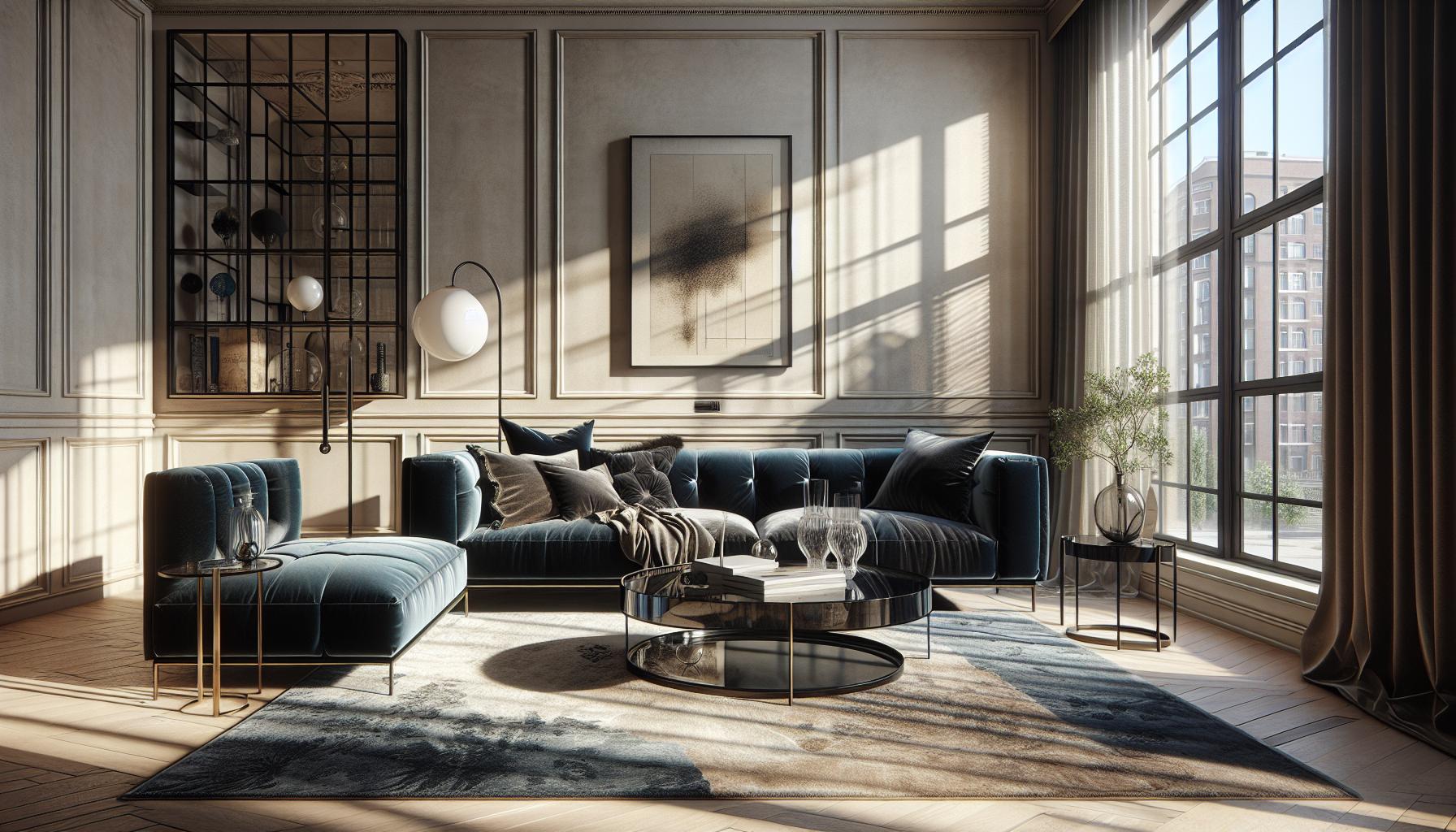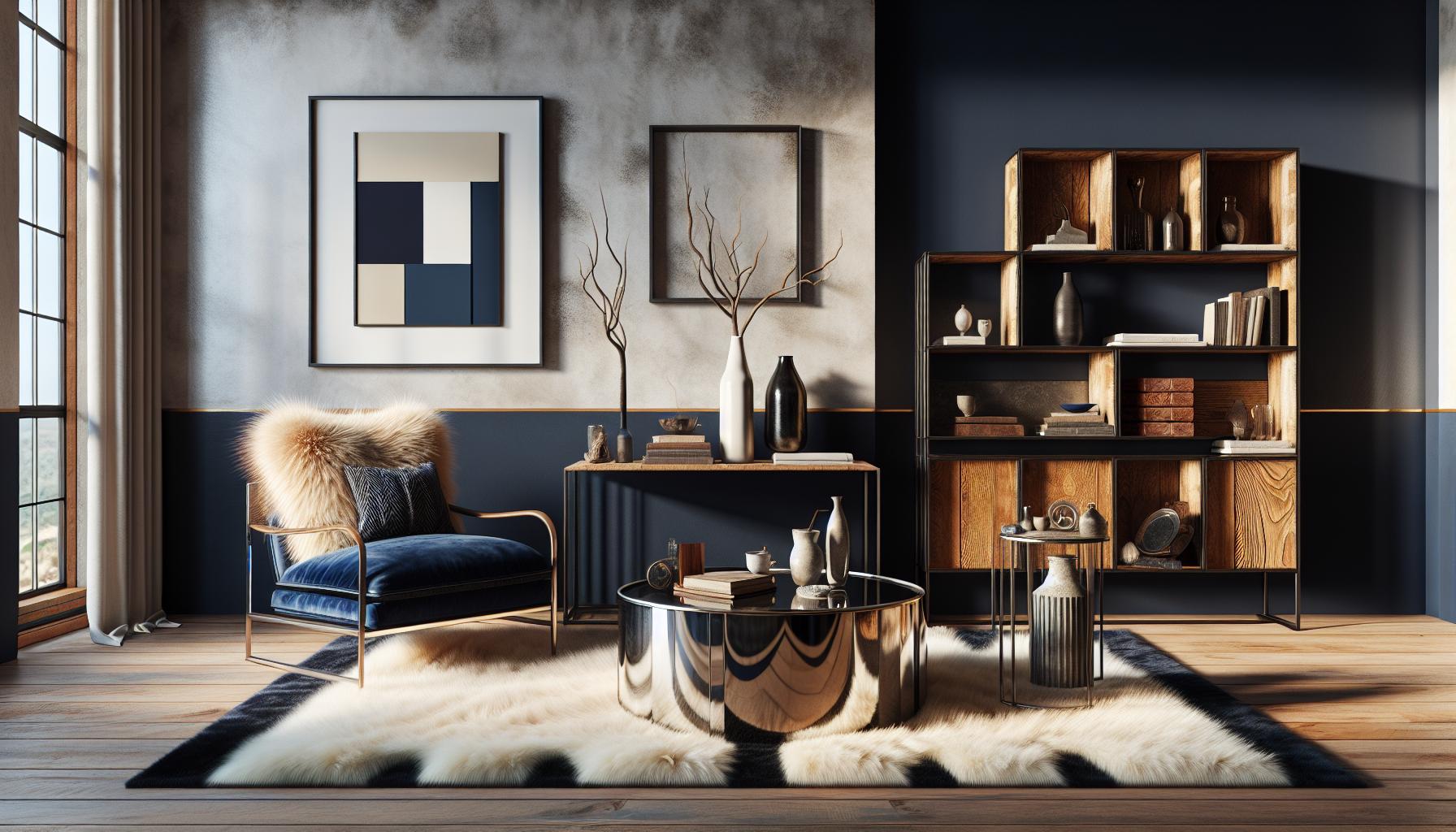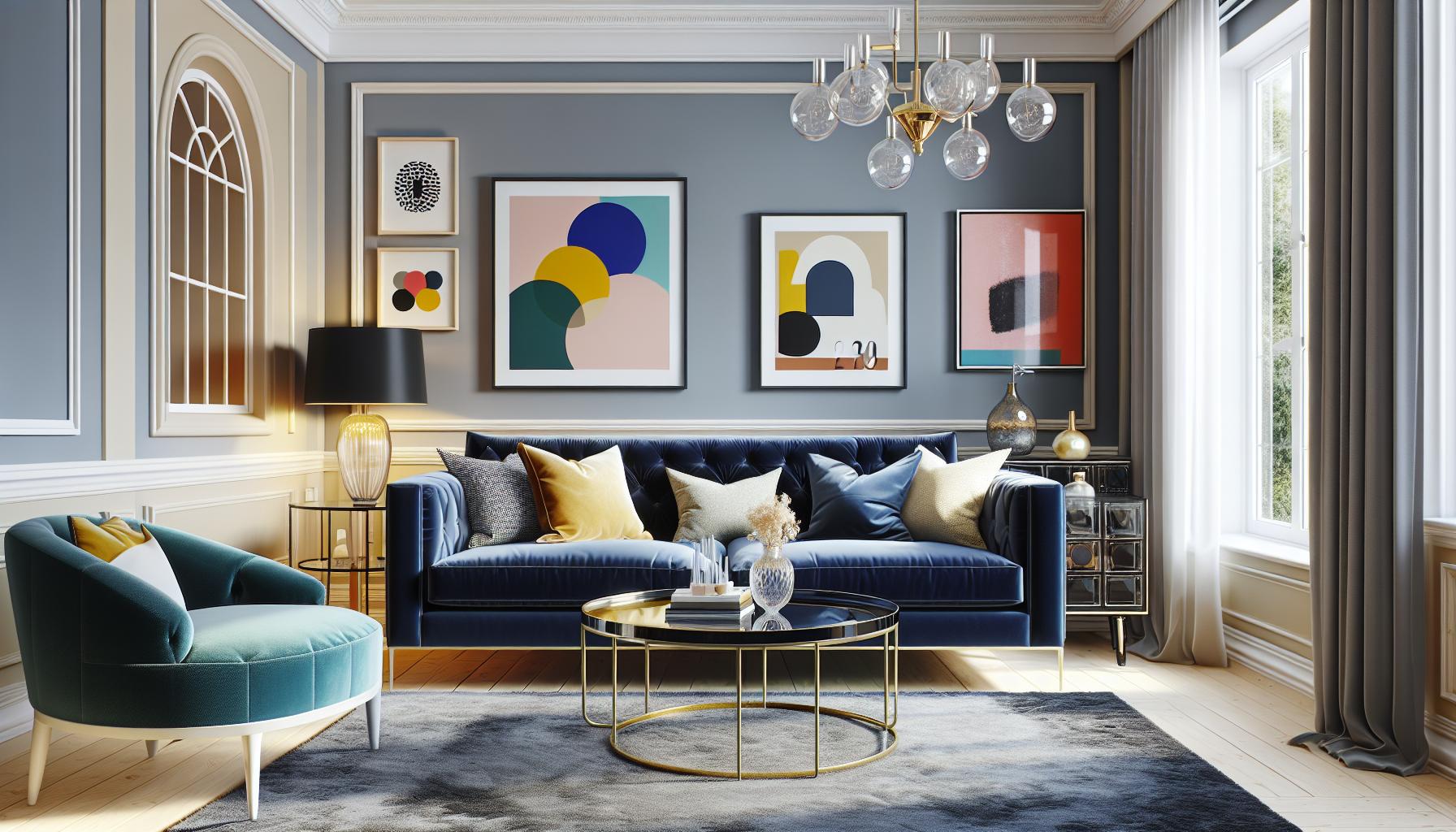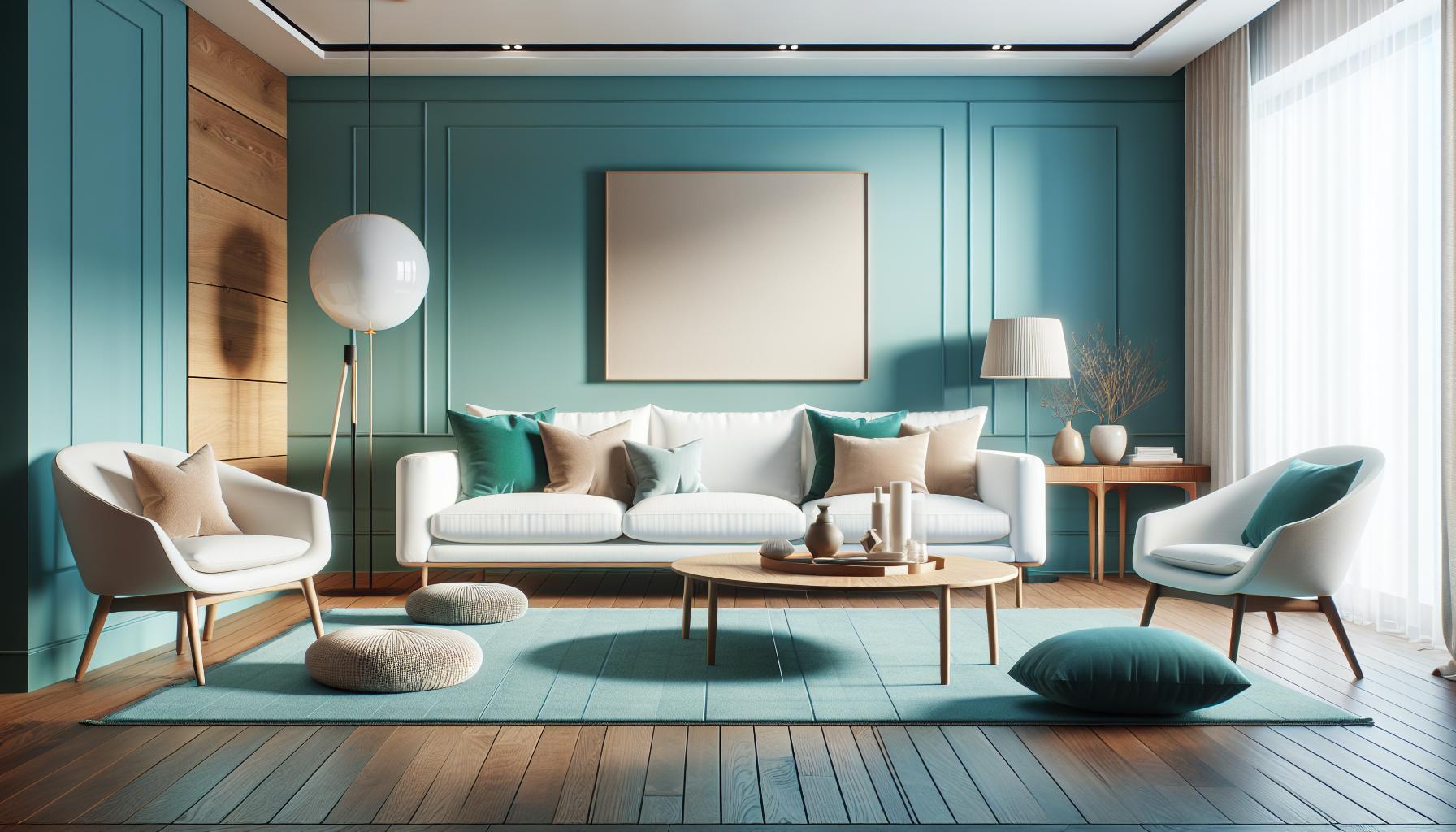
When it comes to interior design, contrast is the secret ingredient that can transform a space from mundane to mesmerizing. I’ve always found that playing with contrasting elements—whether it’s color, texture, or style—creates a dynamic and visually captivating environment. The art of contrast isn’t just about black and white; it’s about finding the perfect balance between opposing forces to create harmony and interest.
In my experience, contrast interior design invites the eye to explore and appreciate the unique details of a room. It’s about daring to mix bold patterns with minimalist furniture or pairing sleek modern pieces with rustic accents. This approach not only highlights individual elements but also brings a sense of depth and personality to any space. As we dive into the world of contrast interior design, let’s explore how you can use this powerful technique to elevate your home and make a striking statement.
Key Takeaways
- Contrast as a Transformative Element: Contrast interior design enhances spaces by introducing dynamic and captivating aesthetics through the interplay of colors, textures, and styles.
- Visual Interest and Depth: Utilizing contrasting elements like bold colors and varied textures invigorates spaces, creating focal points that draw the eye and accentuate room features.
- Balancing Opposing Forces: Effective use of contrast involves balancing vibrant shades with neutral tones and combining traditional and modern styles, ensuring harmony and individual element highlights.
- Functional and Emotional Benefits: Contrast enhances room functionality by delineating spaces for specific purposes and evokes emotional responses, enriching the overall sensory experience.
- Adaptable Design Strategy: The versatility of contrast allows for personalized decor, seamlessly blending rustic, modern, and vintage elements to cater to diverse style preferences.
Contrast Interior Design
Contrast interior design plays a crucial role in making a space distinctive. By combining opposite elements, it highlights unique aspects of each component. When using dark wall paint, for instance, pairing it with light-hued furniture enhances both features, drawing attention to their individual beauty. This strategic use of contrast brings balance and harmony to rooms.
Colors provide an immediate avenue for contrast. Complementary colors like blue and orange create energetic vibes, while monochrome schemes utilizing black and white offer a timeless look. This creates a cohesive environment if carefully balanced.
Textures contribute depth and interest to spaces. A plush velvet sofa juxtaposed with a sleek glass coffee table adds layers to the visual narrative. Materials such as wood and metal can be integrated to contrast natural warmth with industrial coolness.
Styles often provide unexpected contrast. Modern furniture against a traditional backdrop or rustic elements within sleek, contemporary spaces sparks curiosity and promotes a unique aesthetic. Mixing vintage finds with modern pieces can revitalize a room.
Contrast interior design affects perception as well. By objectively evaluating lighting, the interplay between bright and dim areas produces focal points. Spotlighting artwork on neutral walls, for example, illuminates the piece and captivates visitors.
Contrast serves as a powerful tool in transforming interiors into memorable settings. Each element works in tandem with another, enriching the overall design experience. The challenge lies in thoughtfully combining various opposites to create an inviting atmosphere.
Key Elements of Contrast Interior Design

Contrast interior design thrives on the skillful interplay of various elements, creating a vibrant and immersive environment. Key aspects anchor the design, each contributing to the thematic tension that defines contrasting styles.
Colors and Shades
Pairing opposite colors generates visual excitement and balance. For instance, combining a bold navy with a soft cream can create a sophisticated and serene ambiance. Emphasizing lighter shades against dark backdrops can further define a space. This plays into the perception of depth and dimension, leveraging the dynamic between vibrant and neutral tones to structure the room’s flow.
Textures and Materials
Contrasting textures are vital for injecting character into a space. A plush faux-fur rug beneath a sleek metal coffee table adds tactile variety. Mixing rough-hewn wood with polished surfaces can evoke rustic charm while maintaining elegance. The artful juxtaposition of different materials invites tactile exploration and aesthetic appreciation, enhancing the sensory experience of the room.
Furniture and Decor
Juxtaposing diverse styles showcases individuality. A vintage armchair beside a minimalist bookshelf highlights unique features of each piece. Incorporating eclectic decor like ornate frames with streamlined furniture creates focal points and engages the eye. The interplay between various design influences fosters a distinctive atmosphere, blending traditional comfort with contemporary flair.
Benefits of Contrast Interior Design

Contrast interior design elevates spaces, making them more dynamic and engaging. Its primary benefit lies in its ability to create depth. By using contrasting colors and textures, I add dimension which transforms flat, uninspired rooms into lively areas, inviting exploration and interest.
Visual interest greatly improves with contrast. Pairing bold colors like navy and cream or textures such as velvet and glass draws the eye to specific features, enhancing appreciation of a room’s details. This intentional focus generates a cohesive yet distinct aesthetic that defines the space uniquely.
Contrast also enhances functionality. Strategic use of light and dark elements can delineate areas for specific purposes, creating zones for relaxation or productivity. By contrasting different styles, like modern elements against a vintage backdrop, I ensure that each piece’s function and aesthetics are highlighted.
Moreover, contrast supports emotional impact. Complementary colors evoke energy and excitement, while contrasting textures offer comfort and intrigue. This balance appeals to senses on multiple levels, resulting in a harmonious and invigorating environment that resonates emotionally with occupants.
Improving versatility, contrast design adapts to various styles and preferences. Whether incorporating rustic accents into modern spaces or introducing bold hues into minimalist decor, the transformative power of contrast allows for endless personalization, meeting diverse aesthetic desires with precision.
Tips for Incorporating Contrast in Your Space

Incorporating contrast in interior design adds depth and interest to any space, showcasing individual elements and creating balance. Whether through color, style, or texture, these strategies illuminate how contrast transforms a room.
Balancing Bold Colors
Choosing bold colors creates a striking visual impact. I recommend pairing vibrant hues with neutral tones to achieve equilibrium. For example, a bright turquoise wall can be offset with a white sofa or beige accessories. This ensures that the bold color remains the focal point without overwhelming the space. Incorporating small accents of similar bold colors, like throw pillows or artwork, ties the theme together and maintains cohesion.
Mixing Different Styles
Integrating distinct design styles enhances character and uniqueness. I find that combining modern furniture with vintage pieces generates intrigue and sophistication. For instance, a sleek mid-century chair paired with a classic wooden dining table strikes a perfect harmony between past and present. Attention to scale and proportion ensures the elements complement rather than conflict with each other. Embracing varied styles permits a customizable approach to decor that reflects personal taste while maintaining visual interest through contrast.
Real-Life Examples of Contrast Interior Design
I recall a striking use of contrast in a New York loft. Designers combined industrial elements, like exposed brick walls, with soft, luxurious textile accents, creating a space that felt both raw and inviting. The juxtaposition of sturdy metal fixtures against plush velvet furniture exemplified how mixing materials can elevate a room.
In another example, a California beach house masterfully balanced contrasting colors. The designers used bold, dark cabinetry in the kitchen against the backdrop of a light, airy open-plan living area. This combination not only enhanced the kitchen’s features but also maintained a cohesive, relaxing atmosphere throughout the house.
A Scandinavian-inspired apartment illustrated contrast through styles, mixing vintage mid-century furniture with modern minimalist décor. The contrast between the sleek lines of contemporary pieces and the rich history of antique finds crafted a unique narrative, inviting conversation and exploration.
One particularly memorable project involved a Parisian apartment where contrast appeared in textures and lighting. Designers paired a modern, monochrome color scheme with rich, tactile surfaces like distressed wood and plush upholstery. Strategic lighting accentuated these contrasts, creating dynamic focal points in the living space.
Each of these examples demonstrates contrast’s potential to transform interiors into compelling, deeply personal environments. Whether through color, texture, or style, deliberate contrasts can redefine a space’s character and draw out inherent beauty.
Transforming Any Space with Contrast
Embracing contrast in interior design is a powerful way to transform any space into a vibrant and engaging environment. By thoughtfully combining colors, textures, and styles, we can highlight the unique characteristics of each element and create a harmonious balance. This approach not only enhances the visual appeal but also adds depth and functionality to a room. Whether it’s pairing bold patterns with minimalist pieces or integrating modern and traditional styles, contrast invites us to explore and appreciate the intricacies of our surroundings. By incorporating these principles, we can elevate our home design and craft spaces that truly resonate with our personal style.
